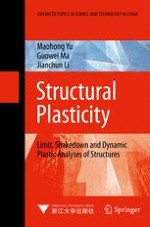Limit and shakedown analysis for structures can provide a very useful tool for design and analysis of engineering structures. "Structural Plasticity - Limit, Shakedown and Dynamic Plastic Analyses of Structure" provides more general solutions of limit and shakedown analysis for structures by using a unified strength theory. A series of solutions of plates from circular, annular plates to rhombus plates and square plates, rotating discs and cylinders, pressure vessels are presented. These results encompass the Tresca-Mohr-Coulomb solution of structure as special cases. The unified solution, which cannot be obtained by using a single criterion, is suitable to more materials and structures.
Maohong Yu is professor of Department of Civil Engineering at Xi'an Jiaotong University, China. He has authored 12 books including "Unified Strength Theory and Its Applications" and "Generalized Plasticity".
